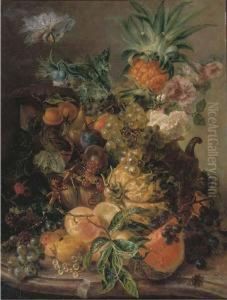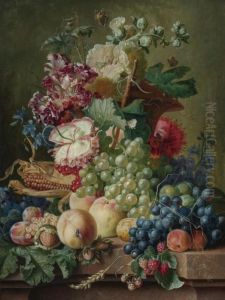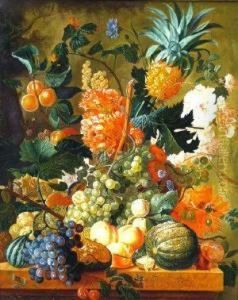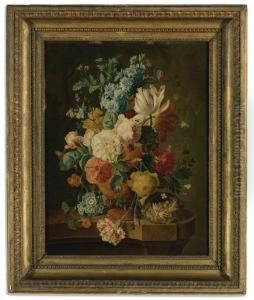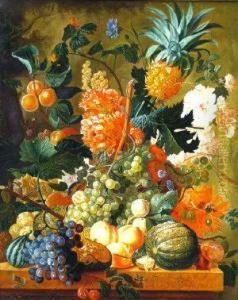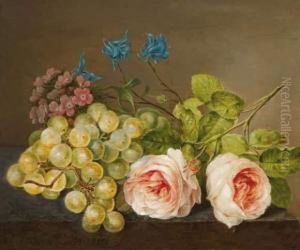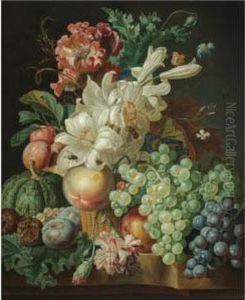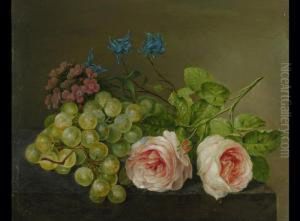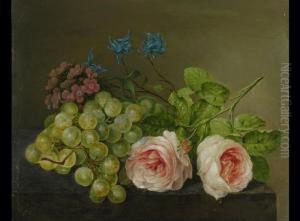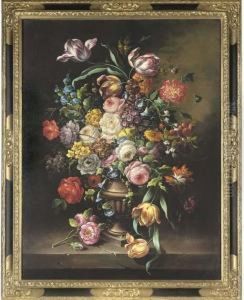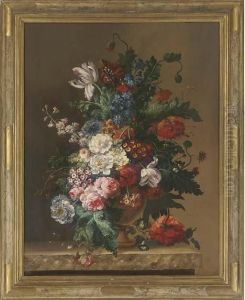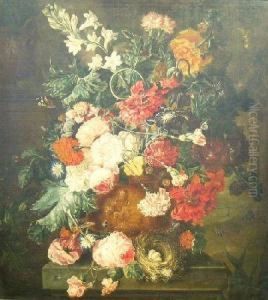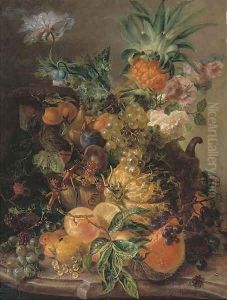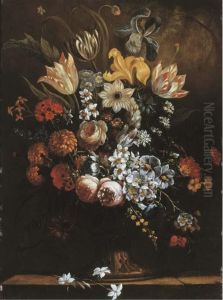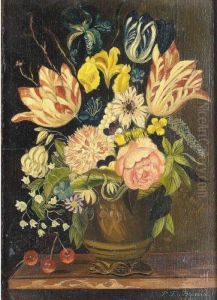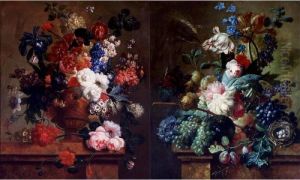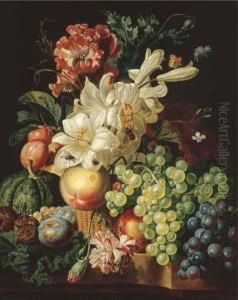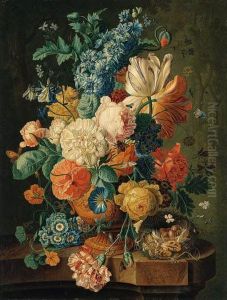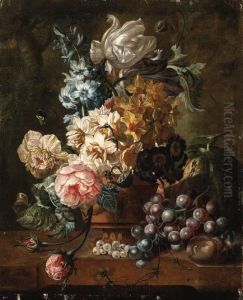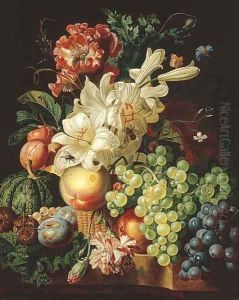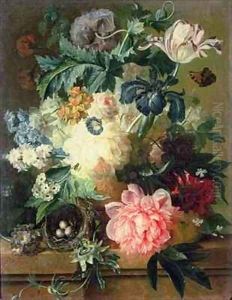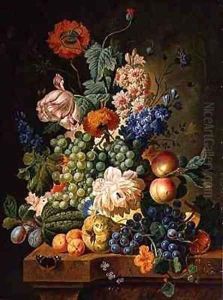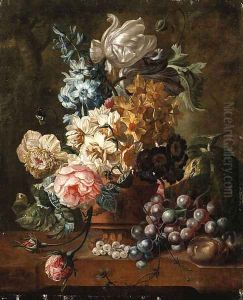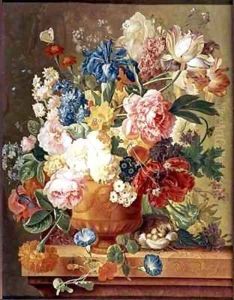Paul-Theodor Van Brussel Paintings
Paul-Theodor Van Brussel was a Flemish painter known for his detailed still lifes of flowers and fruits that reflect the influence of the Dutch Golden Age. Born in 1754 in Sint-Pieters-Leeuw, near Brussels in the Southern Netherlands (now Belgium), he was active during a period in which still life painting was a popular genre, often imbued with symbolic meanings related to the transience of life and the bounty of nature.
During his lifetime, Van Brussel developed a reputation for his ability to render objects with precision and a delicate sense of texture and light. His compositions often featured a rich array of flowers, arranged in ornate vases, and sometimes included fruits, all depicted with a high degree of naturalism. This was in line with the aesthetic values of his time, where such paintings were appreciated not only for their beauty but also for their virtuosity in depicting the natural world.
Van Brussel's work is characterized by its vivid colors and intricate details, which have been preserved in the collections of various museums and art enthusiasts. Despite his relatively short life, passing away in 1795 at the age of 41, his contributions to the genre of still life painting have been noted by art historians. His paintings are considered prime examples of late 18th-century still life, and they continue to be studied for their technical skill and their place within the larger context of European art history.
